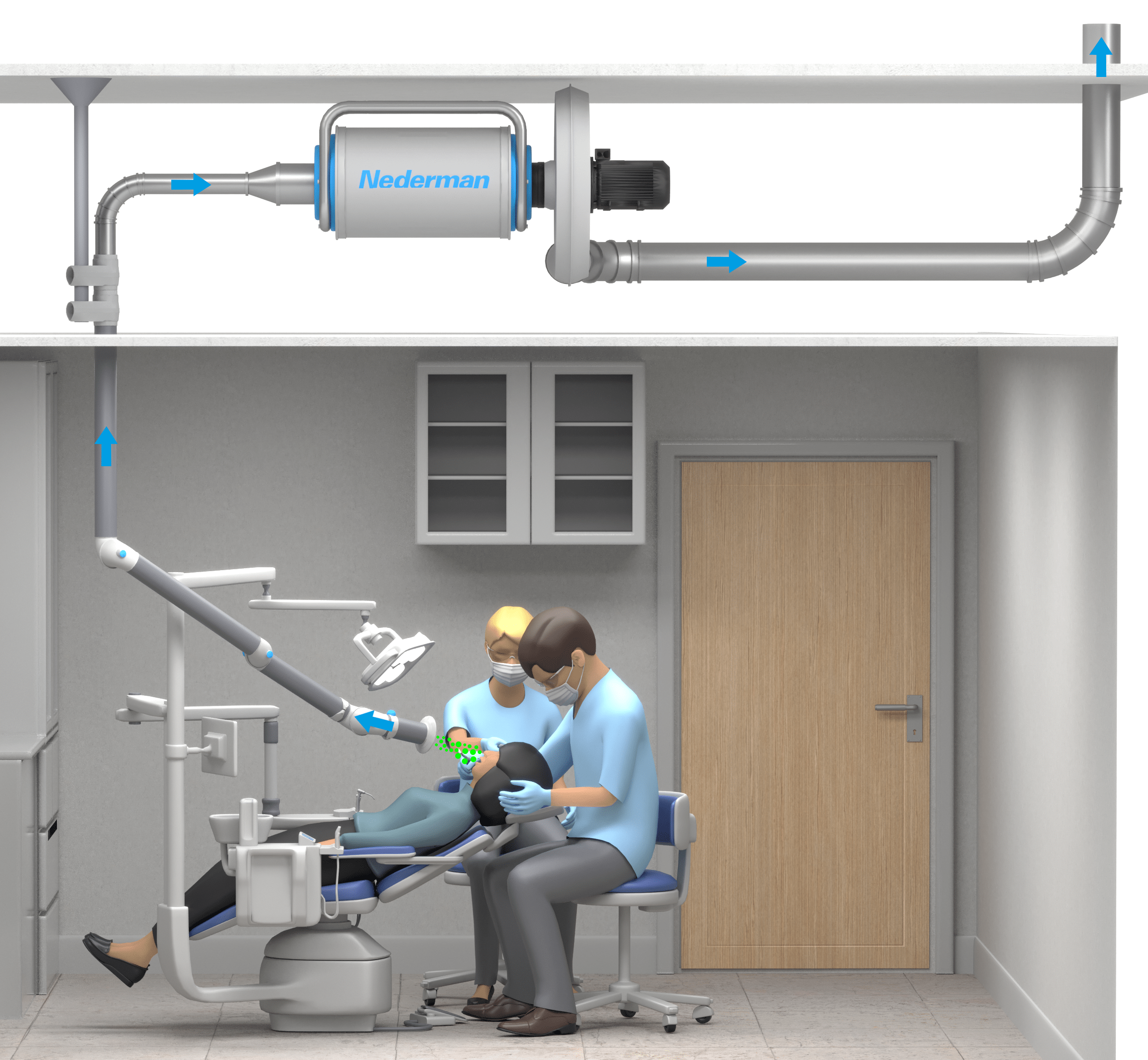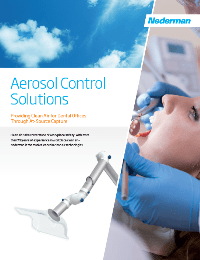Aerosol generating procedures (AGPs) can potentially transmit respiratory infection or disease. These hazardous aerosols are a growing concern for dentists and other healthcare professionals.
Dental clinics might pose risks for both patients and dental healthcare workers. The aerosols and splatter produced during dental procedures have the potential to spread infection to both dental personnel and patients. Transmission of microorganisms may occur by direct contact with contaminated tissues or instruments. Also direct contact with saliva, blood or aerosol particles from saliva and respiratory fluids might transmit infection.
Aerosols generated by routine dental procedures may carry potentially hazardous microbes, viruses, allergens and other toxic substances that may harm the dental operator, patient, and the dental assistant by causing infections.
Several options can be considered in the control of aerosol in the dental clinics. Equipment producing less aerosols might be used but hard to obtain, and additional barriers such as respirator masks or face shields could be used. Another example of ways of to reduce the contamination risk is extraction of the aerosols at or close to the source since most of the aerosols have been found to radiate toward the patient's chest and the operator, as well the dental assistant's face.
It is difficult to completely eliminate the risk posed by dental aerosols, but it is possible to minimize the risk with relatively simple precautions. Routine use of standard barriers such as masks and gloves, the universal use of pre-procedural rinses, high-volume evacuation and source extraction are potential solutions for reducing the risks.
The CDC's National Institute of Occupational Safety and Health (NIOSH) recommends applying a hierarchy of controls to mitigate the risk of airborne contaminants resulting from aerosol generating procedures. While no single system can fully mitigate risk, the use of a well-design engineering controls, as part of a multi-tiered safety strategy and independent working interactions, can significantly reduce worker exposure to hazardous aerosols. Nederman offers a highly effective, source capture aerosol control solution that aligns with relevant health and safety organization recommendations.
Common approaches to indoor air quality are based on ambient air cleaning with air-change schedules by the HVAC system or by adding auxiliary air cleaning equipment. While these techniques may be effective over time, this approach does not remove the immediate worker exposure to aerosols.
Nederman's source capture method is the most effective and energy efficient aerosol control solution. An independent study found that the Nederman FX2 extraction arm achieved 100% capture efficiency with adequate air volume and proper hood positioning. Read our white paper results here.
The Nederman Approach to Aerosol Control

Nederman's aerosol control solution consists of the following elements that seamlessly integrate into your dental operatory:
Nederman FX2 arms are also available in self-assembly kits (Bench Top Extraction Kits), which include a fan, a filter, a fan speed controller, hoses, table bracket and connectors. No duct is needed. These kits provide a quick and convenient solution for improved extraction of aerosols.
Contact Nederman for assistance in selecting the correct aerosol control solution for your workplace.
We have long and extensive experience and a wide range of products and solutions for dental aerosols suction. If you need help finding the right solution for your needs, our experts will help you.

We have extensive experience of various challenges in the different industries and our experts are very skilled, helpful and professional. With us, you can feel secure that we take care of you and your needs. You are always welcome to contact us regardless if you have a short question or a more complex and complicated one. A warm welcome to Nederman.
Contact us here